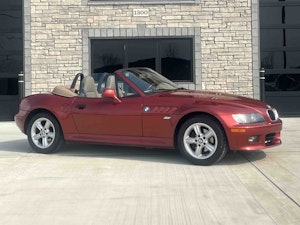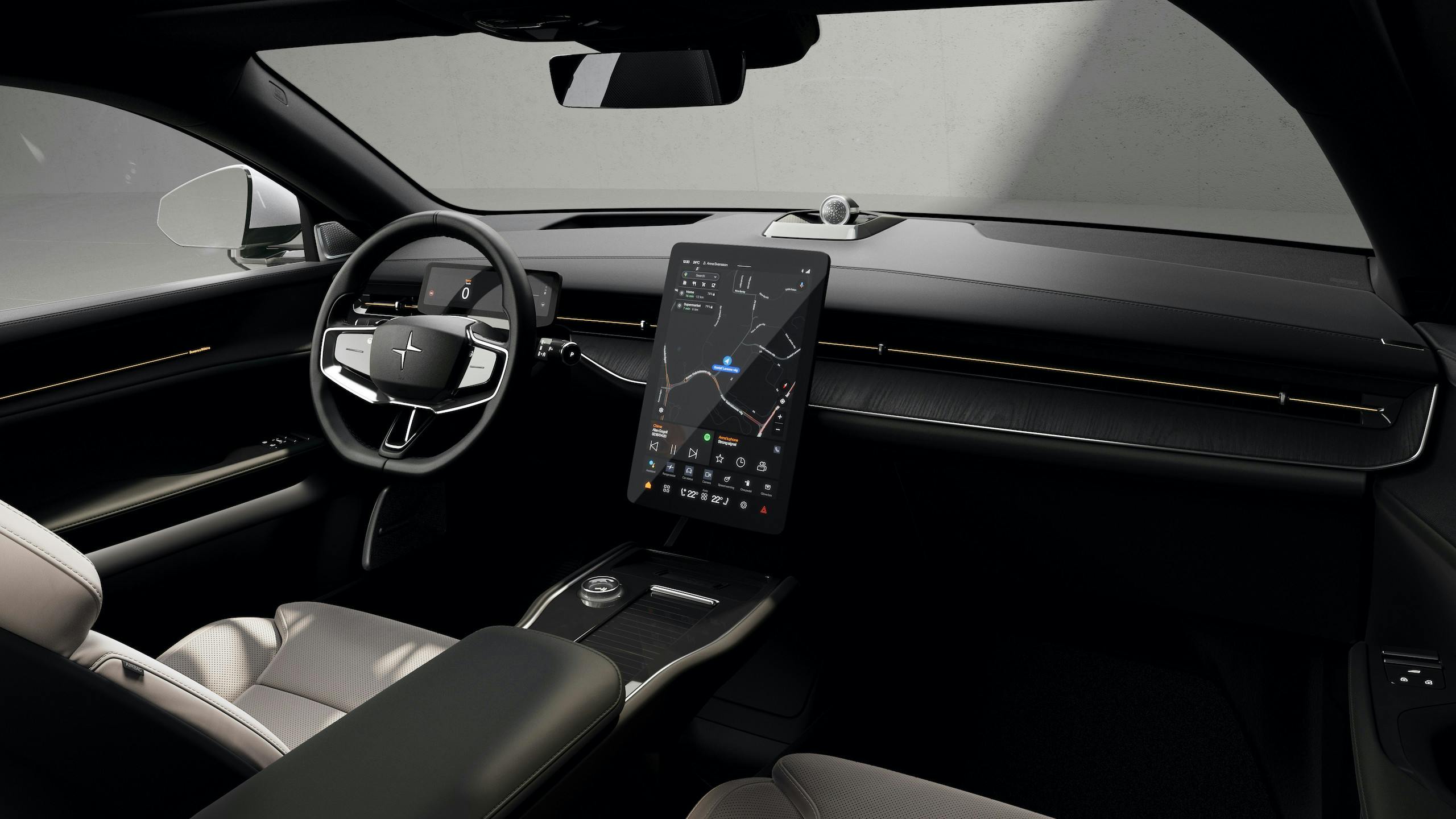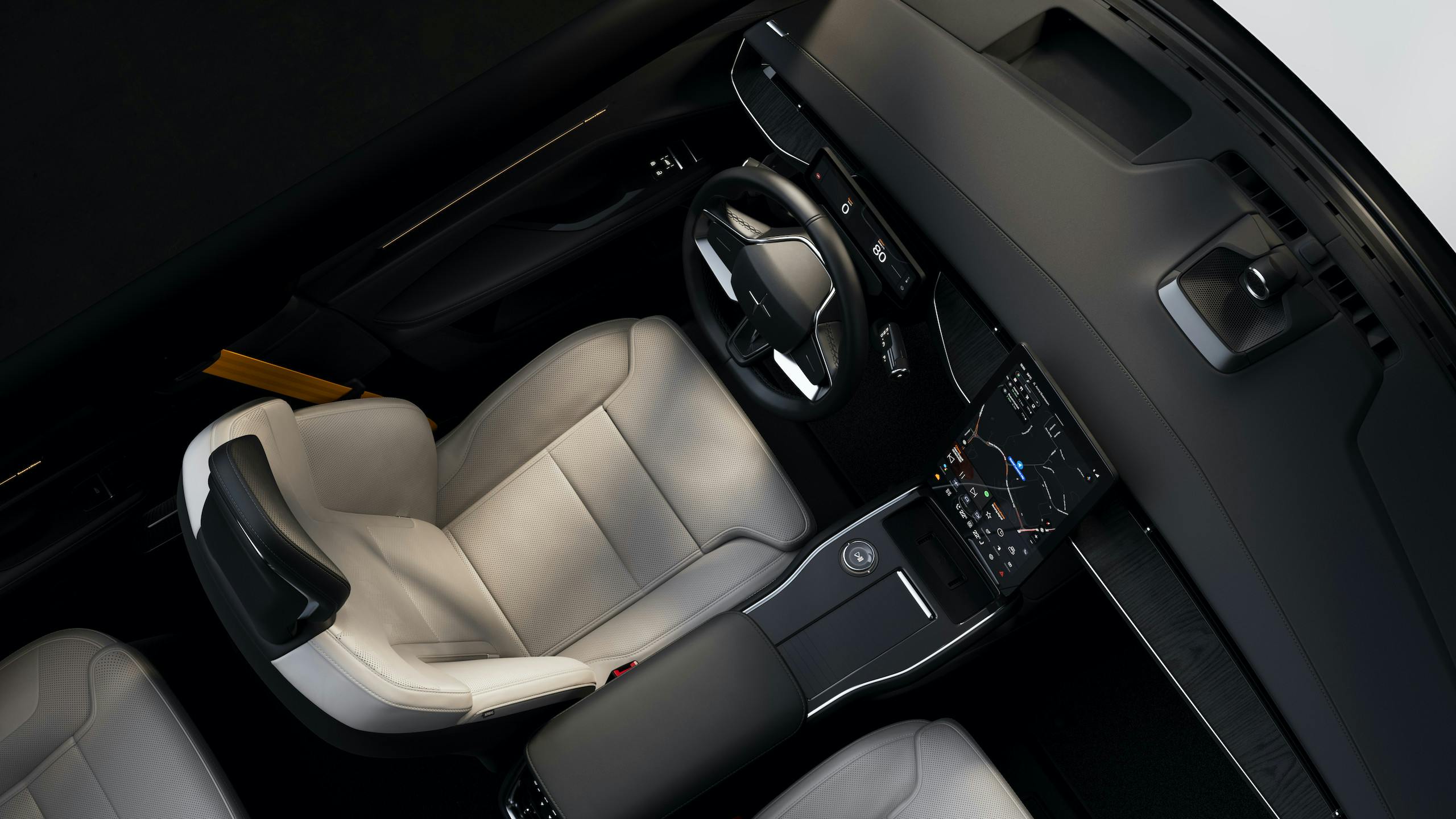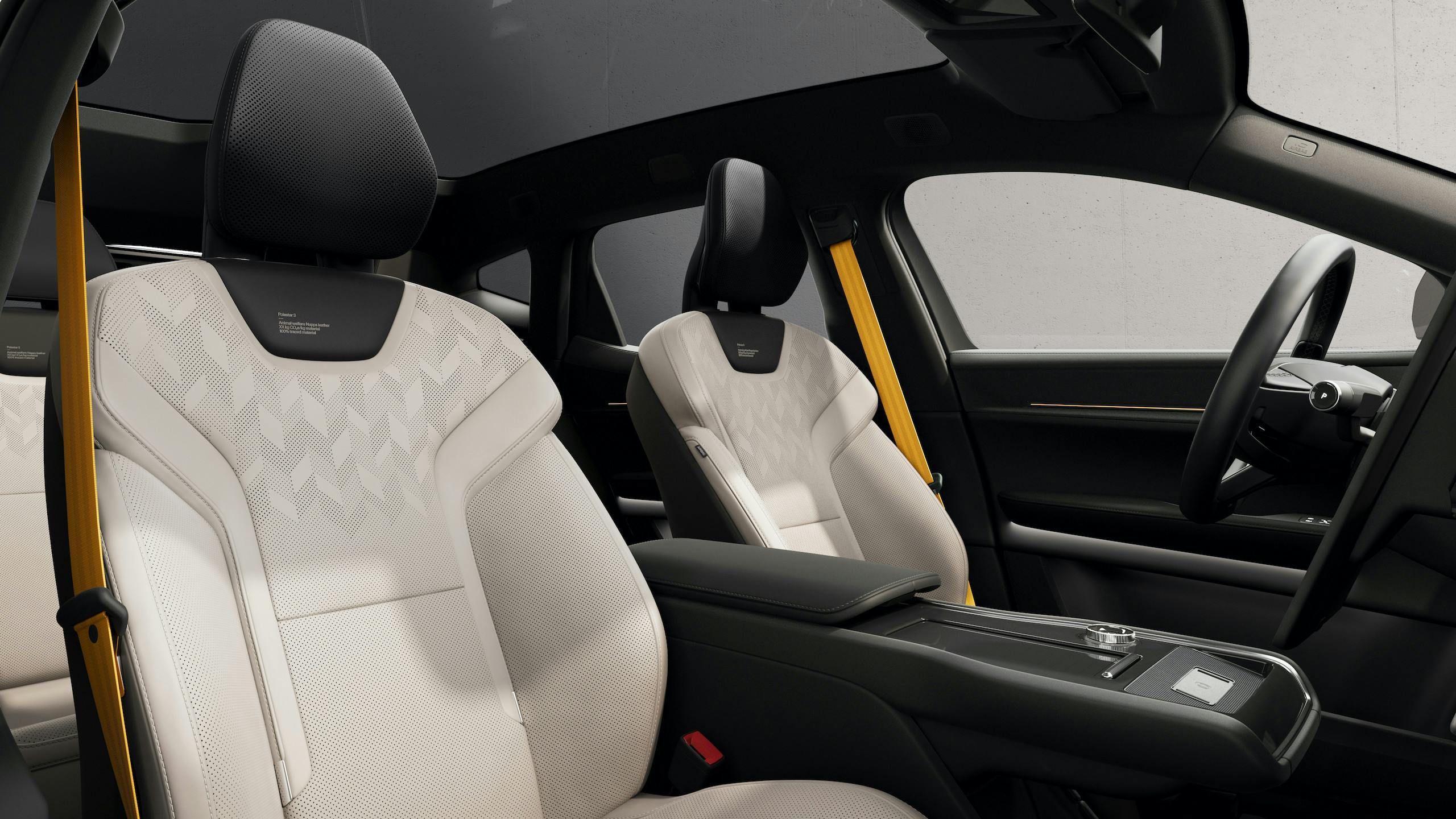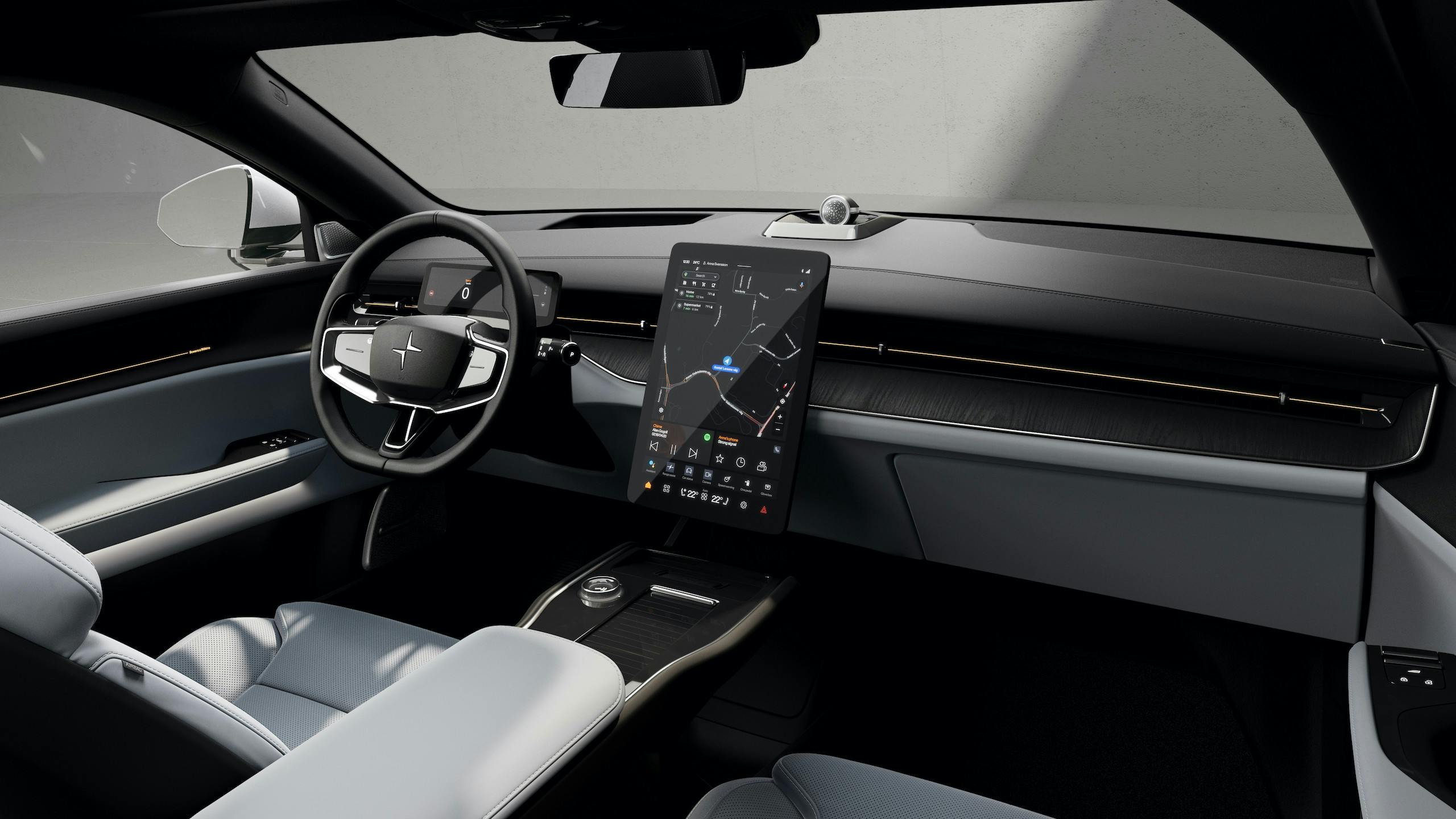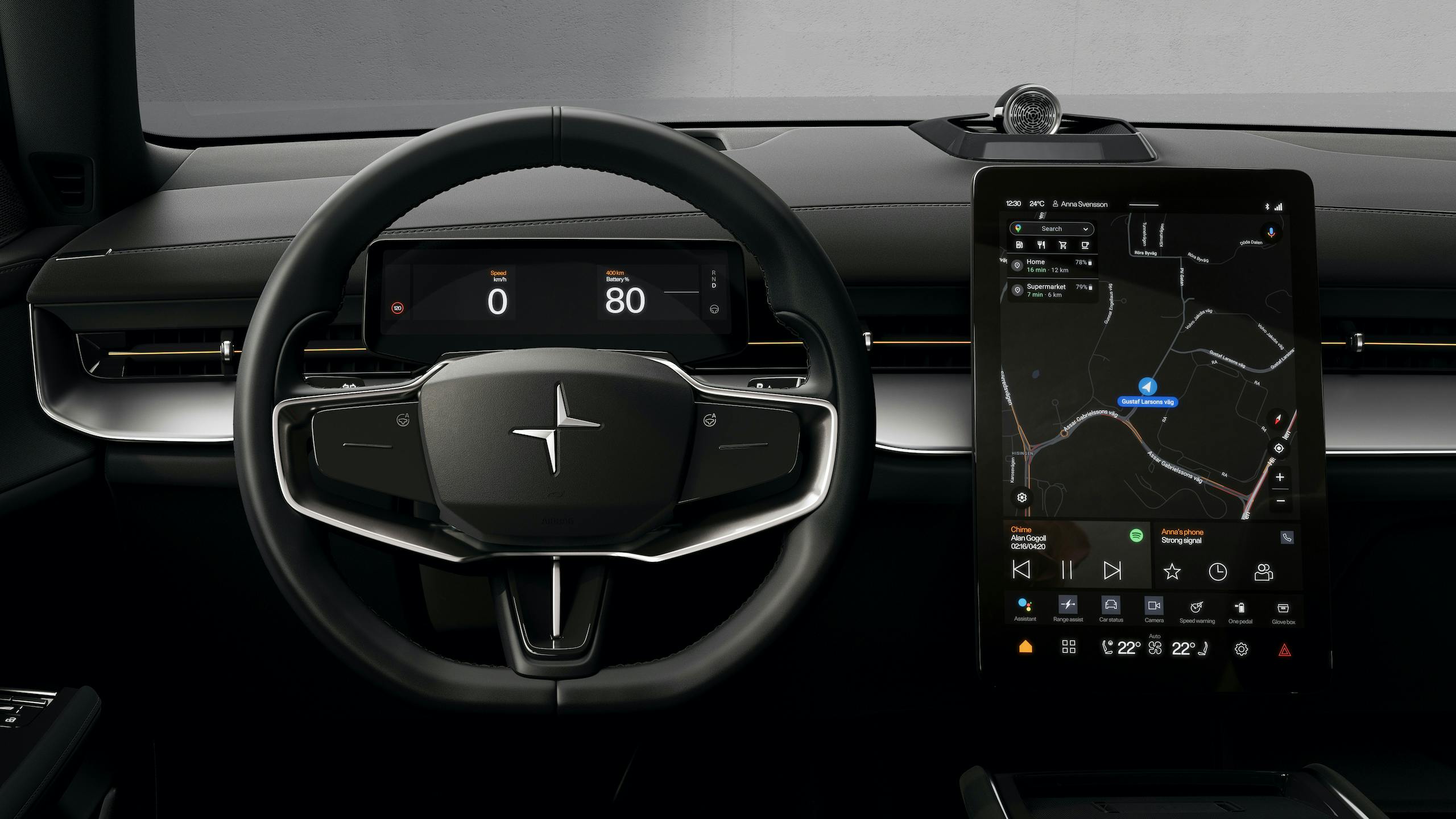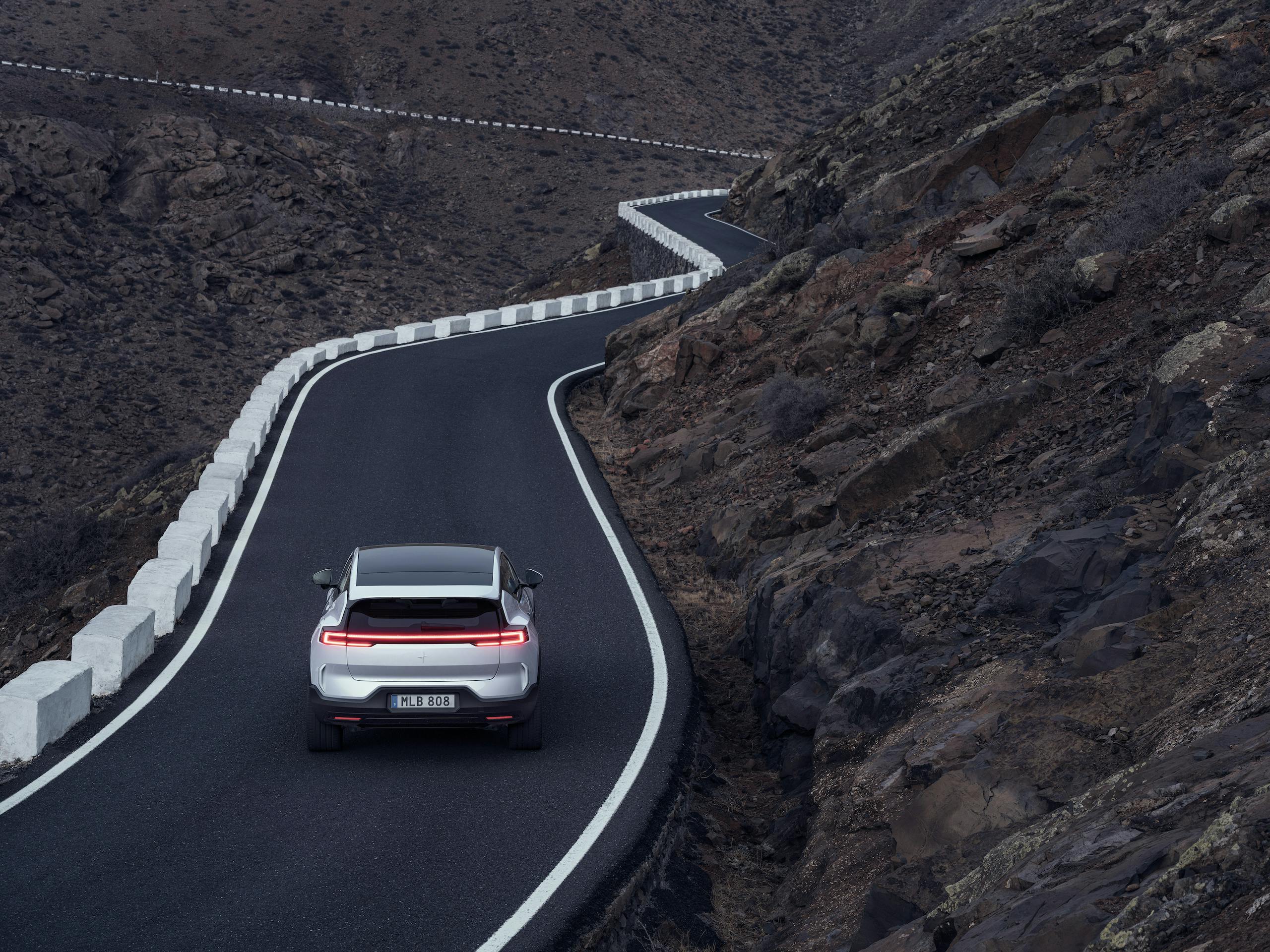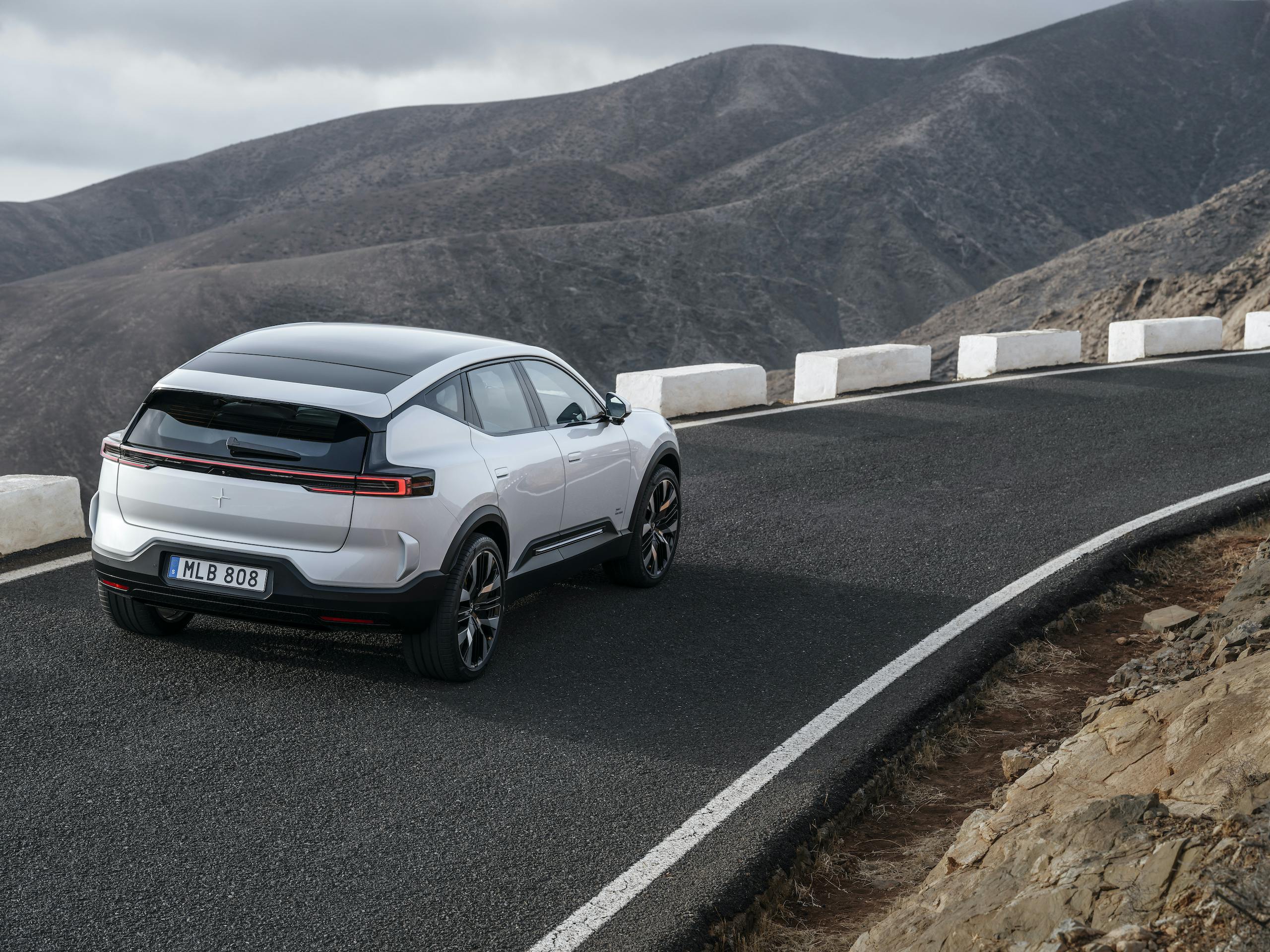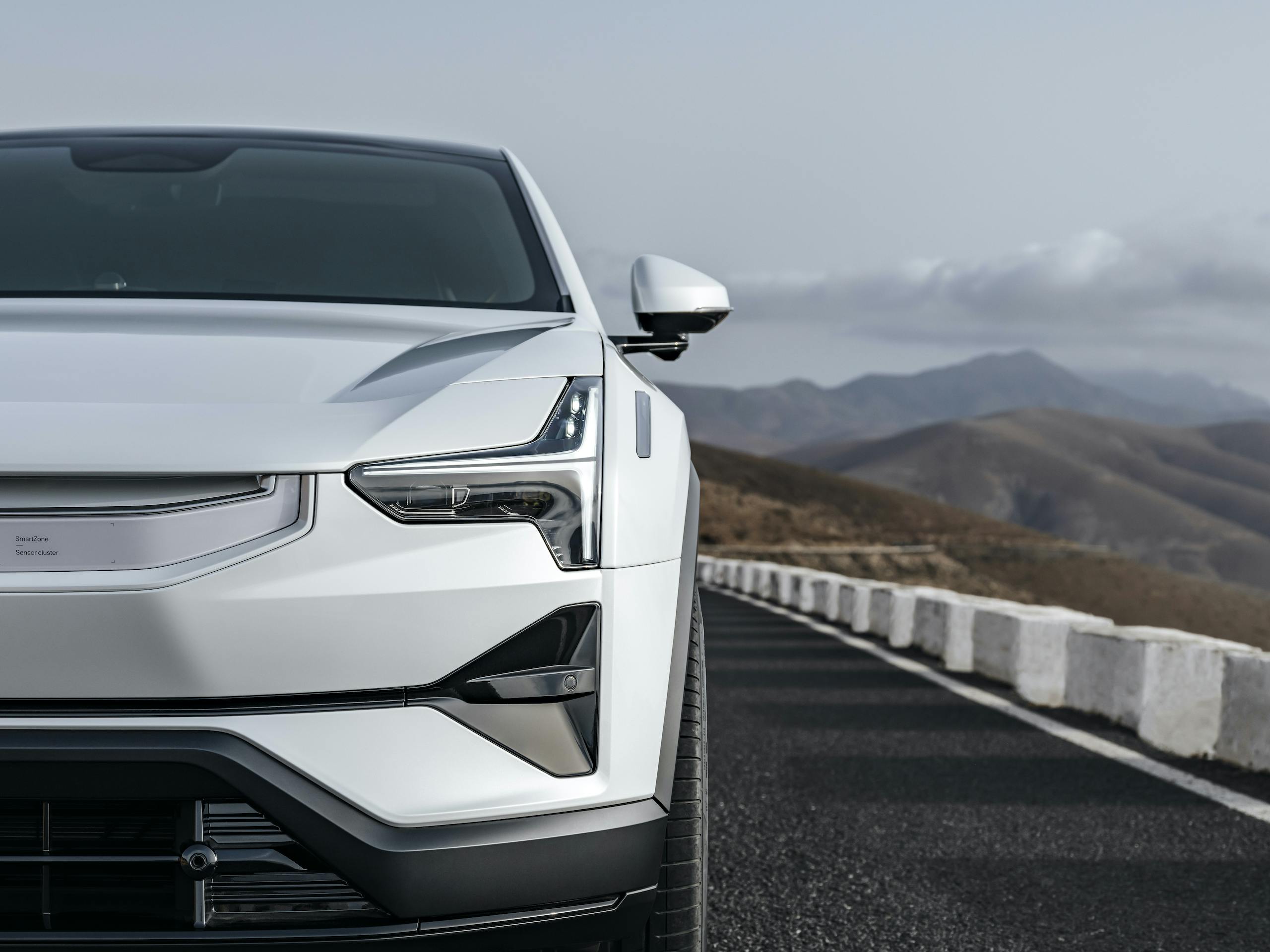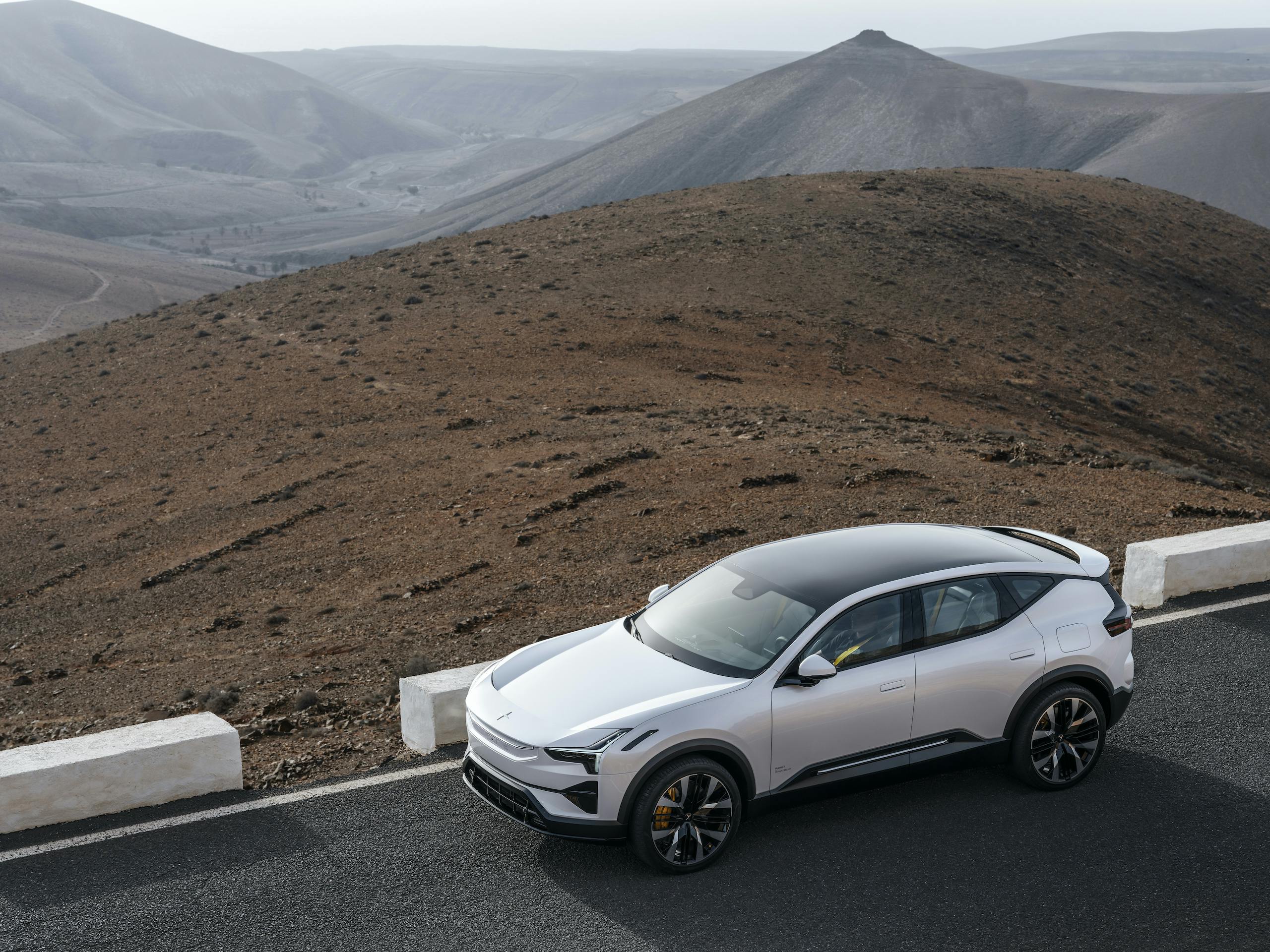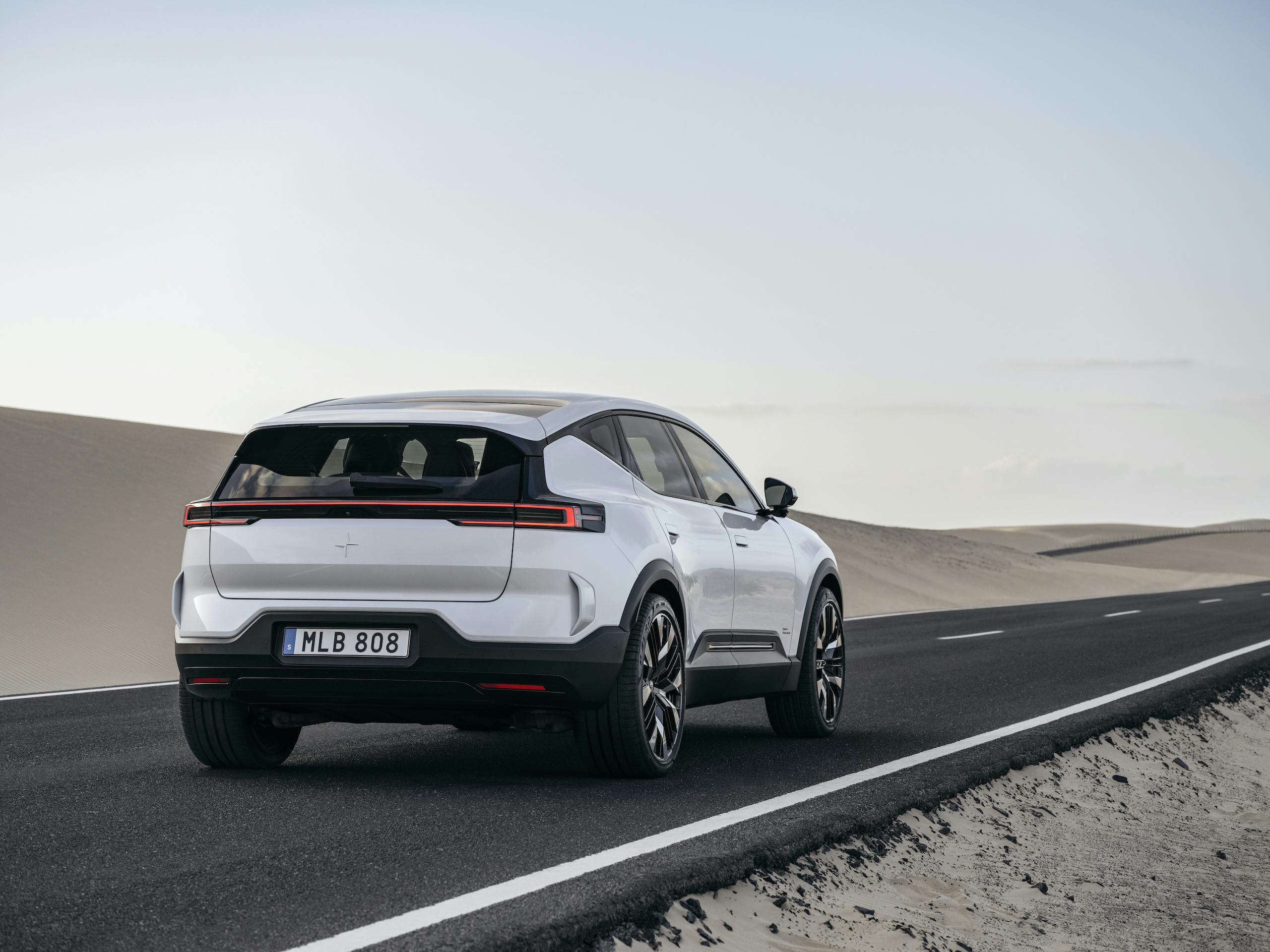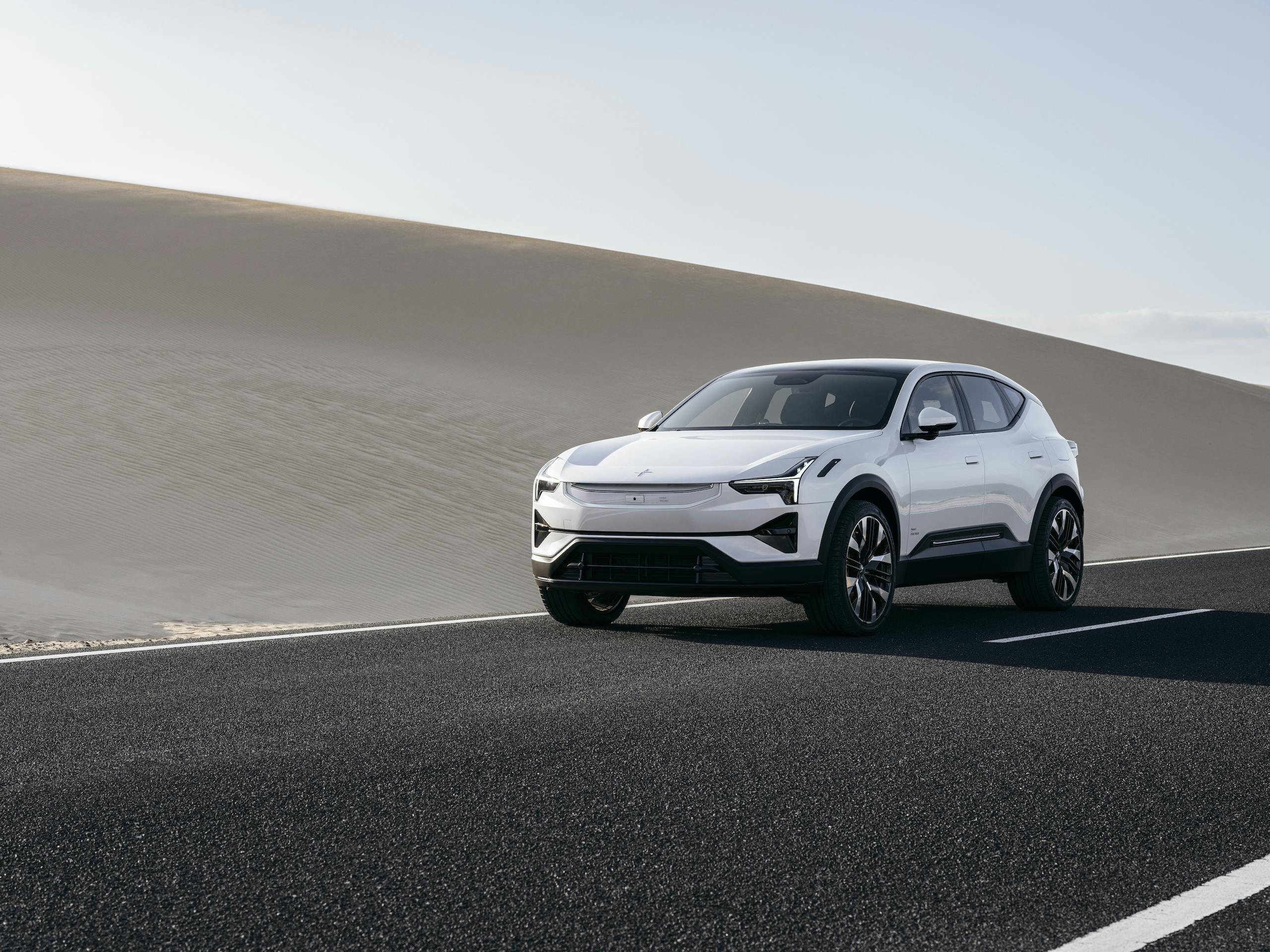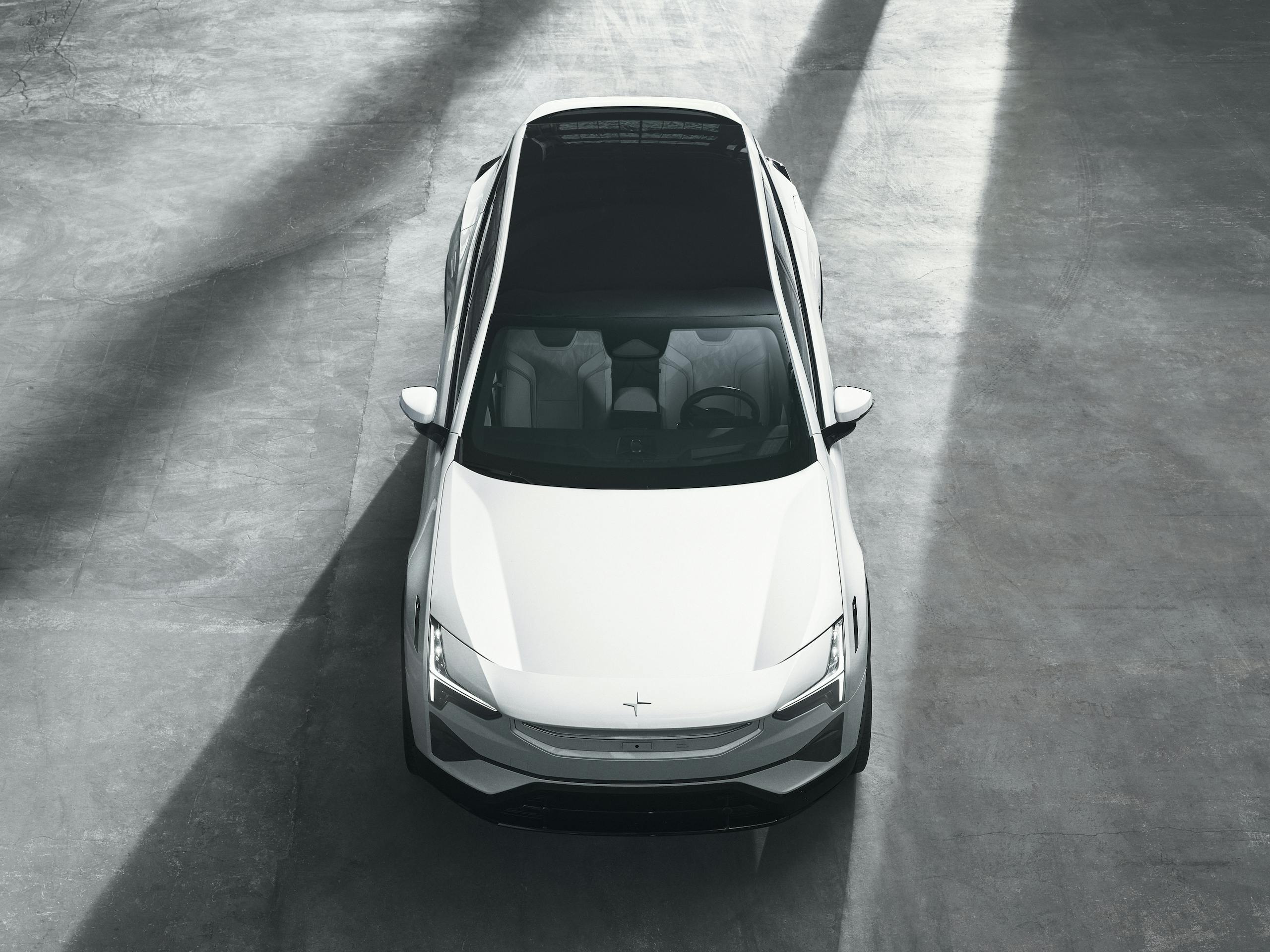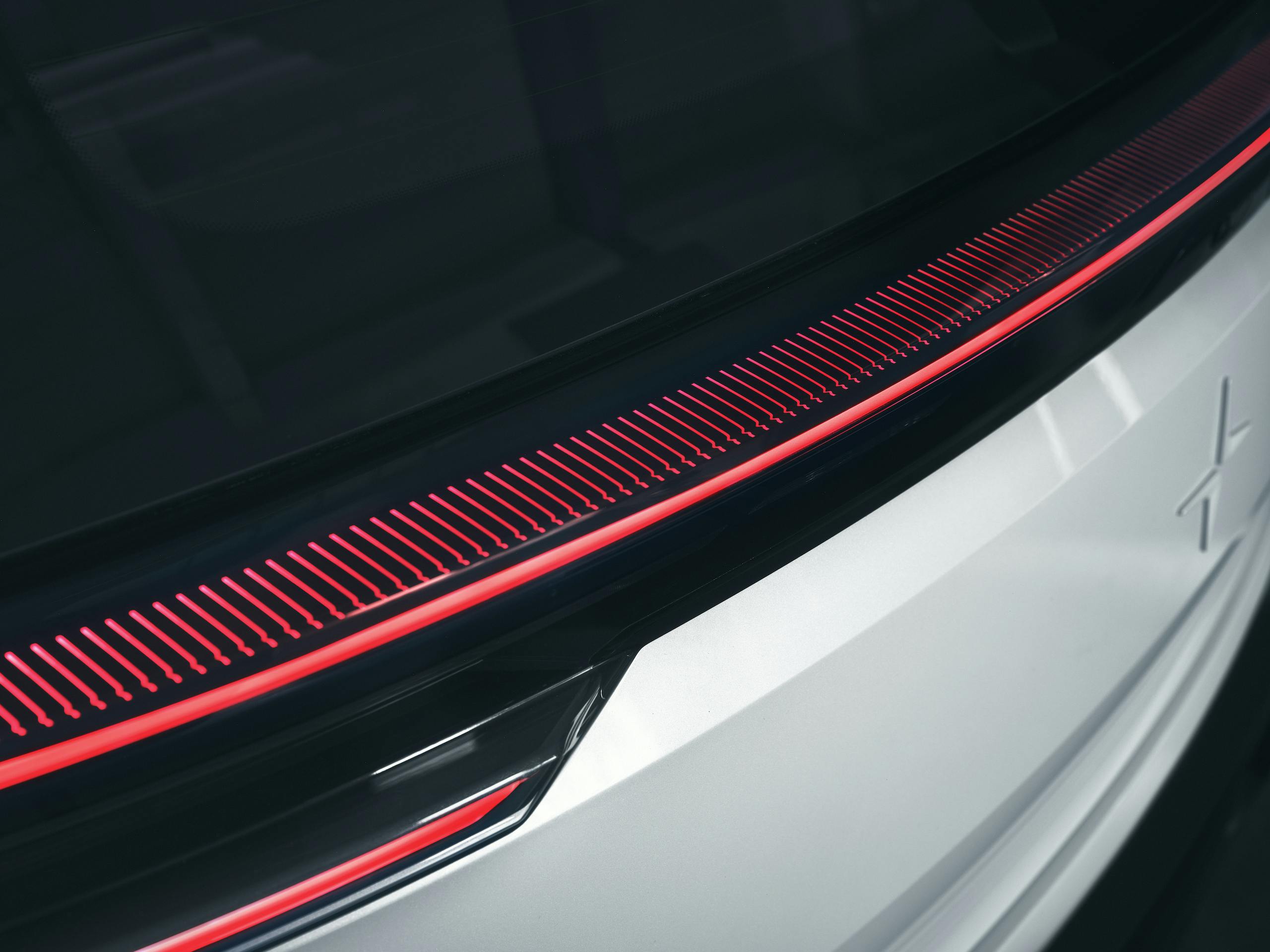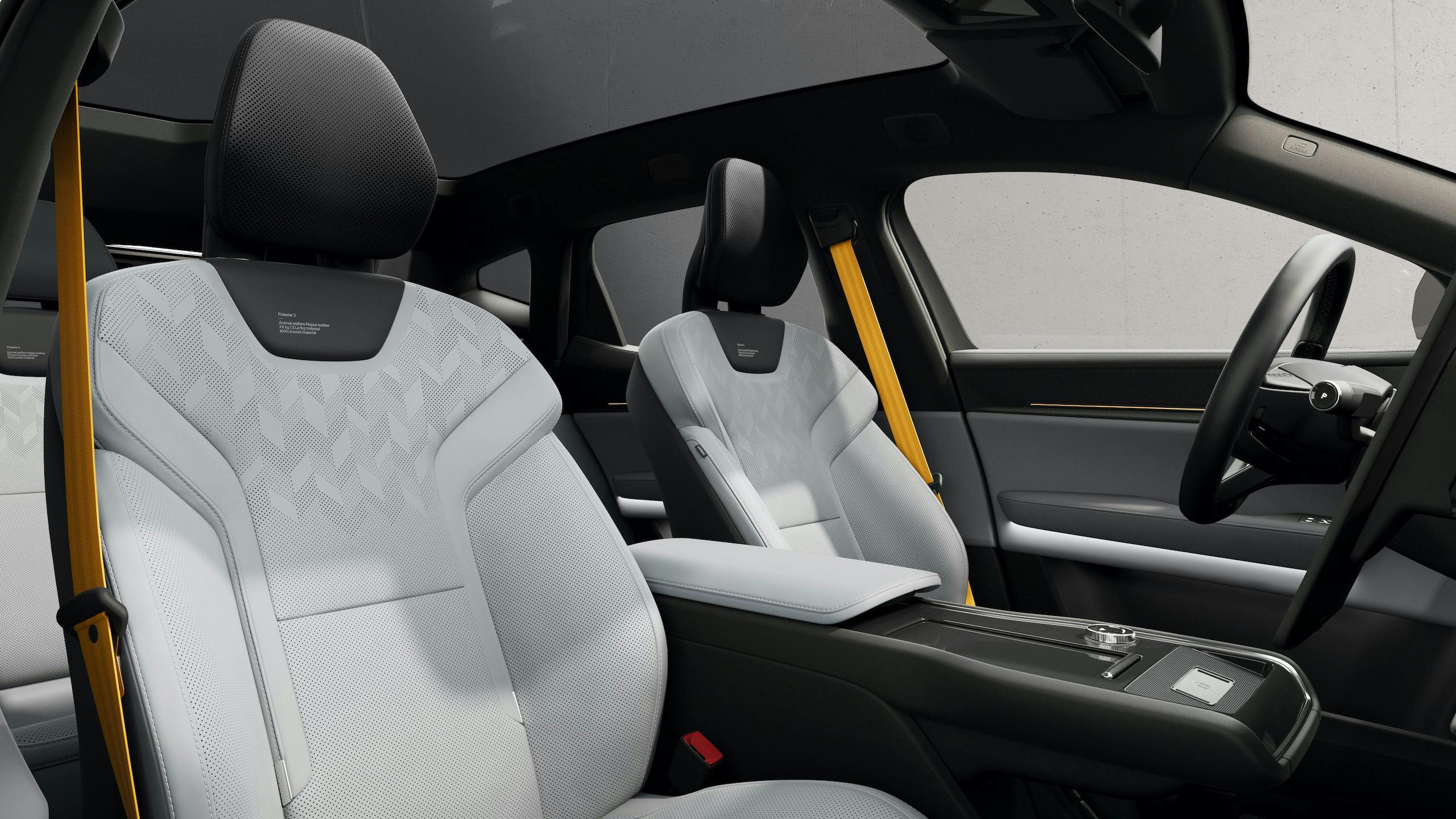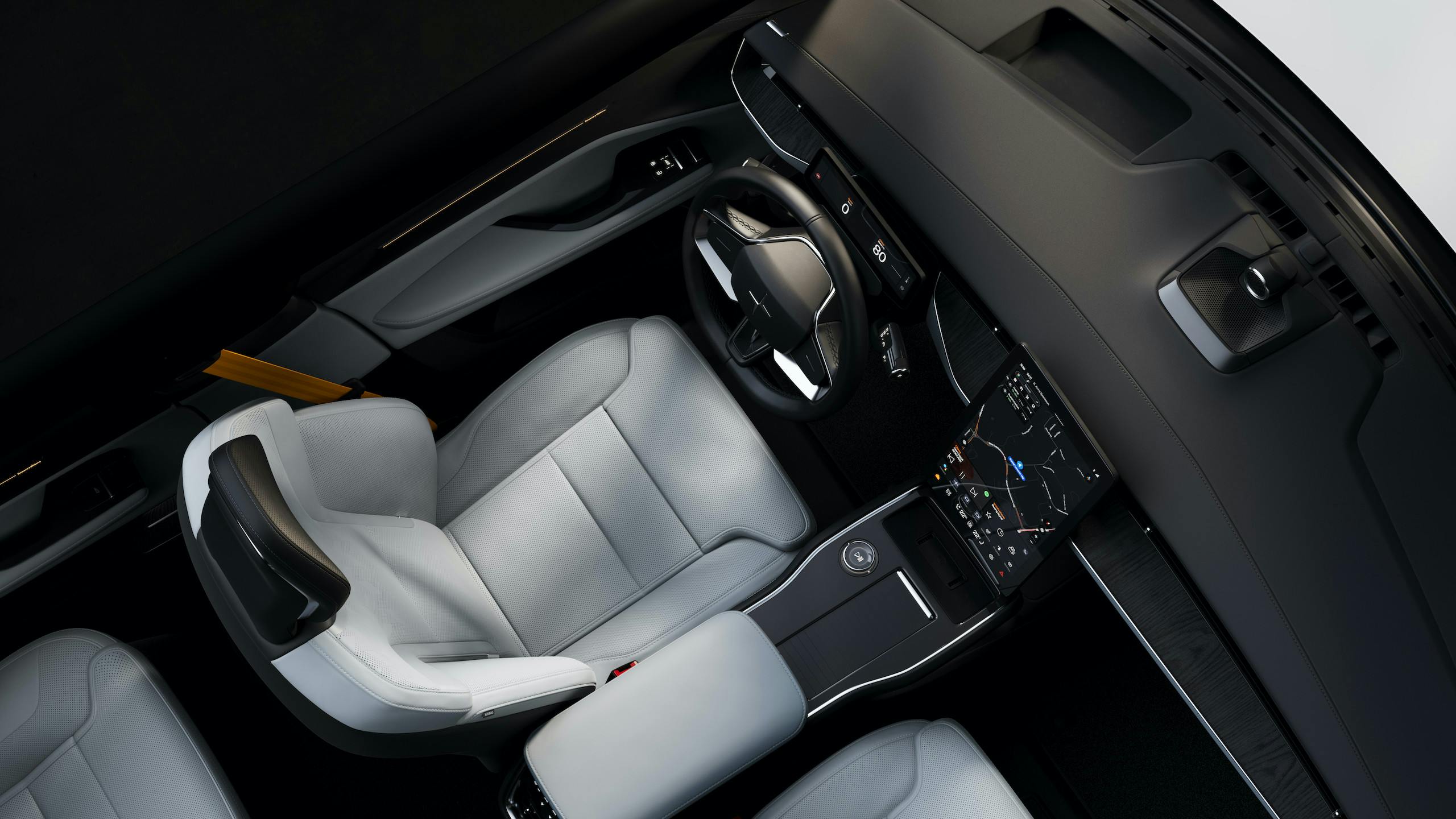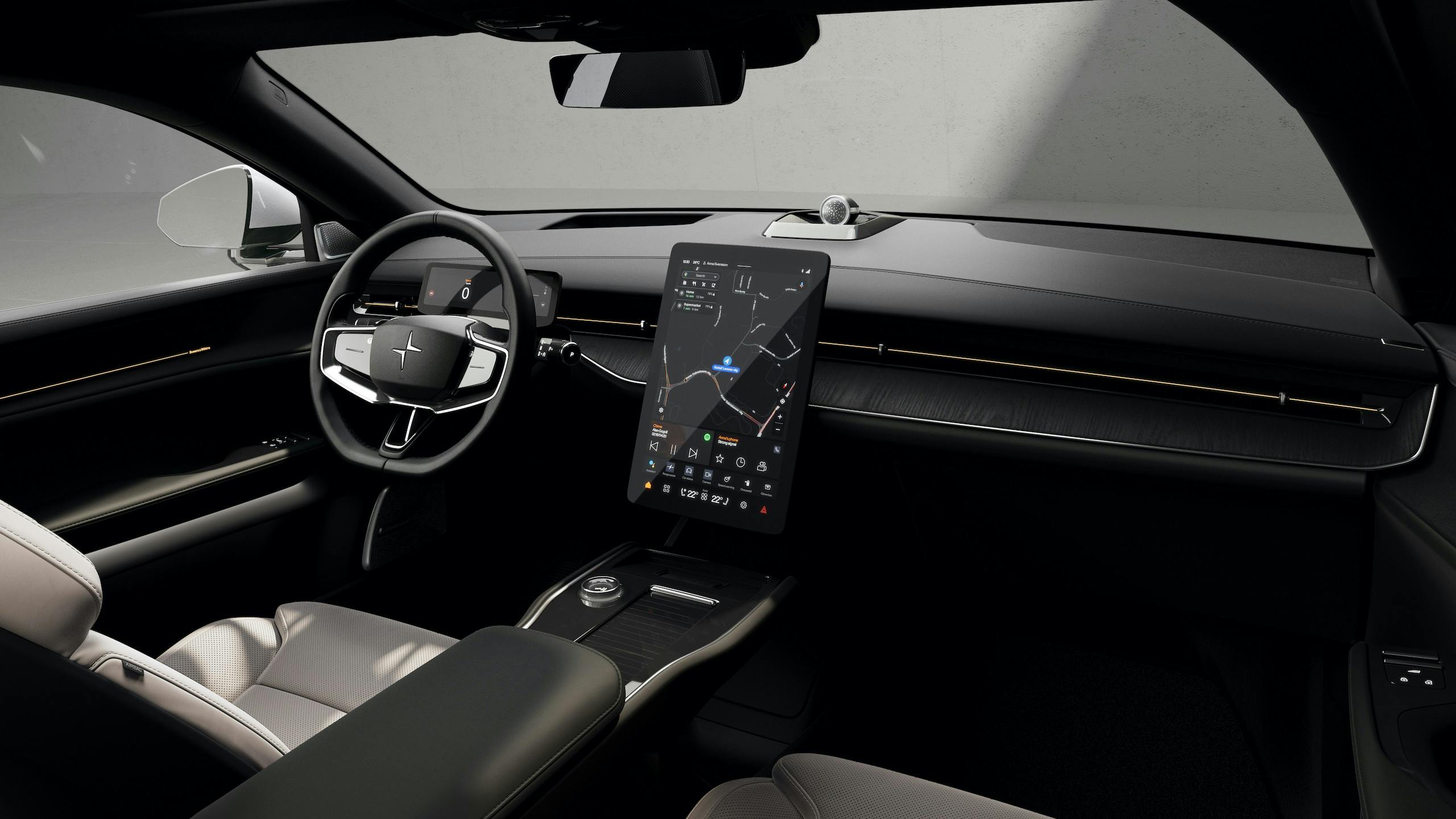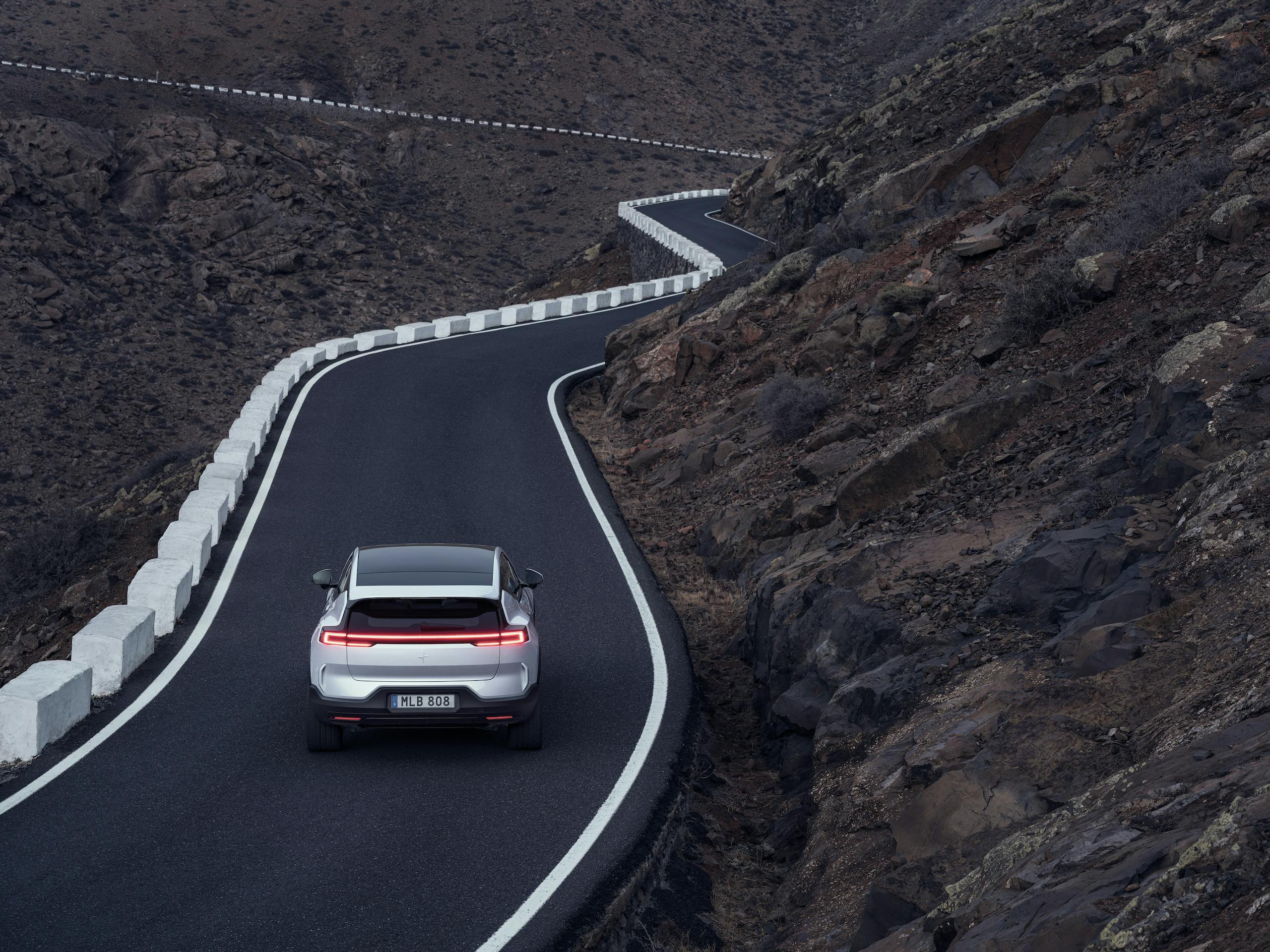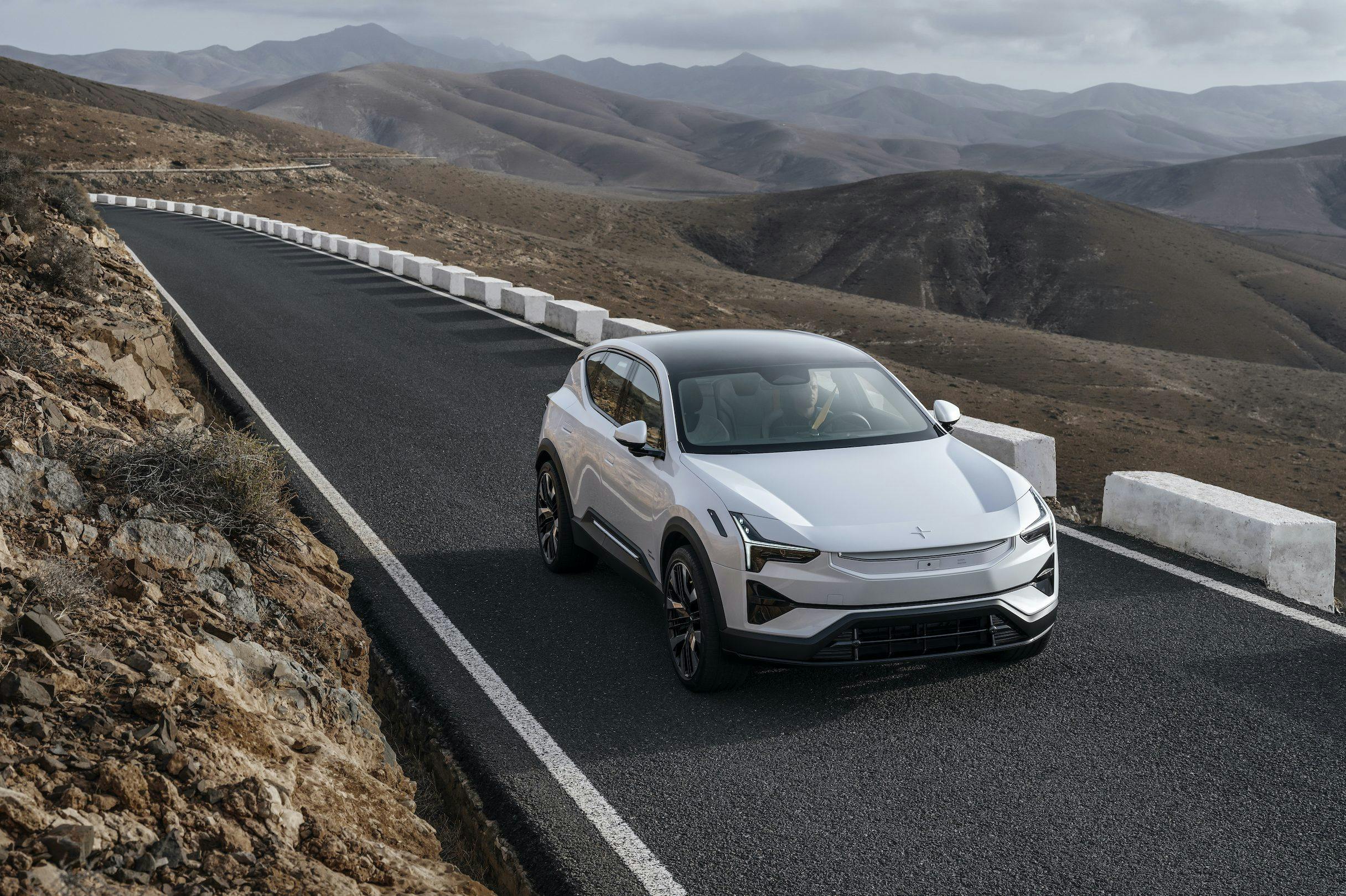Media | Articles
Polestar’s 489-hp SUV drips with Google tech, Swede style
With a base price of $85,300 for the generously equipped, first-year model, the new Polestar 3, on paper at least, certainly looks as though it could be “the SUV for the electric age.”
The details were announced today on the Volvo-Geely joint venture, about a month ahead of Volvo’s promised flagship EV, the EX90. The 3, which joins the crossover-ish “2” in Polestar’s electric portfolio, launches with a dual-motor configuration and a power bias towards rear-wheel-drive for improved driving dynamics. The 3 produces a total of 489 horsepower and 620 lb-ft of torque, but with the optional Performance Pack ($6000) total output raises to 517 horsepower and 671 lb-ft of torque.
Adjustable one-pedal drive is included, as well as an electric Torque Vectoring Dual Clutch function on the rear axle. A decoupling function is also available for the rear electric motor, allowing the car to run only on the front electric motor to save energy under certain circumstances.
Polestar says the 3 will go from 0 to 60 mph in 4.9 seconds, and in 4.6 seconds with the Performance Pack—despite a weight that ranges from 5696 to 5886 pounds, depending on specification. Towing capacity is 3500 pounds. Top speed is 130 mph.
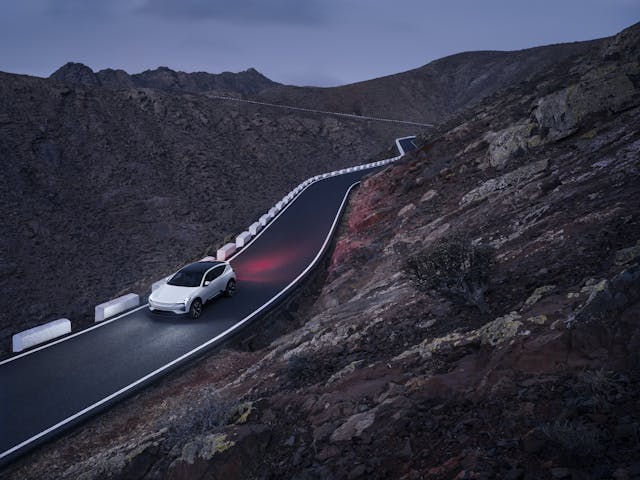
“Polestar 3 is a powerful electric SUV that appeals to the senses with a distinct, Scandinavian design and excellent driving dynamics,” said Thomas Ingenlath, CEO of Polestar. “It also takes our manufacturing footprint to the next level, bringing Polestar production to the United States.” Initially, the first Polestar 3s will come from China, until a plant in South Carolina is built.
Marketplace
Buy and sell classics with confidence
Materials used inside the 3 have been selected for their “sustainability credentials,” without sacrificing premium aesthetics and luxury tactility. These materials include bio-attributed MicroTech upholstery, “animal welfare-certified leather,” and a fully traceable wool upholstery. (Nappa leather is an option.)
Polestar 3 is the first car from Polestar to feature centralized computing with the NVIDIA DRIVE core computer, running software from Volvo Cars. Serving as the vehicle’s AI brain, NVIDIA’s high-performance automotive platform processes data from the car’s multiple sensors and cameras to enable advanced driver-assistance safety features and driver monitoring.
Infotainment is powered by a next-generation Snapdragon Cockpit Platform from Qualcomm Technologies, Inc. It will run a Google Android operating system, thus enabling on-board Google Assistant and navigation via Google Maps. It’s the first Polestar to use the next-gen architecture.

With Volvo Cars embarking on a new era of safety, Polestar 3 carries next-generation advanced active and passive safety technology from Volvo. This includes the latest innovation, interior radar sensors that can detect sub-millimeter movements in the interior of the car, to help protect against accidentally leaving children or pets inside. The system is also linked to the climate control system to avoid heat stroke or hypothermia.
As standard, Polestar 3 features a total of five radar modules, five external cameras, and twelve external ultrasonic sensors to support numerous advanced safety features. The SmartZone below the front aero wing collects several of the forward-facing sensors, a heated radar module and camera, and now becomes a signature of Polestar design.
Inside, two closed-loop driver monitoring cameras bring leading eye-tracking technology from Smart Eye to a Polestar for the first time, an arrangement geared towards safer driving. The cameras monitor the driver’s eyes and can trigger warning messages, sounds, and even an emergency stop function when detecting a distracted, drowsy, or disconnected driver.

A 111-kWh battery pack provides the 3 with generous driving range, estimated by the manufacturer at 300 miles (EPA). The lithium-ion battery features a prismatic cell design housed in a protective aluminum case with boron steel reinforcement and liquid cooling.
Advanced chassis control is provided by dual-chamber air suspension, included in all variants of Polestar 3. This allows the SUV to alternate between comfort and dynamic suspension characteristics. In fact, Polestar 3 can adjust its active damper velocity electronically once every two milliseconds.
“Our goal was to offer the performance and precision that define all Polestar cars, without compromising the comfort of the daily drive,” said Joakim Rydholm, Polestar’s chief chassis engineer. “To do this, we used new components including the adaptive air suspension to engineer the ‘Polestar feeling’ for this type of car.”

The Plus Pack and Pilot Pack are included as standard for the first model year and include a suite of premium, luxury, and convenience features. For the Plus pack this includes a 25-speaker audio system from Bowers & Wilkins with 3D surround sound and Dolby Atmos capability, soft-closing doors, electric steering column, heated steering wheel ,and more. The Pilot pack includes a head-up display, Park Assist Pilot, and the Pilot Assist driver assistance system.
Available to order beginning in the second quarter of 2023 is an additional optional Pilot Pack with LiDAR from Luminar that will add an additional control unit from NVIDIA, three cameras, four ultrasonic sensors, and cleaning for the front- and rear-view cameras, providing accurate real-time data about the car’s surroundings especially in the long-range field. This LiDAR system enables enhanced 3D scanning of the car’s surroundings in greater detail and helps prepare the car for autonomous driving.
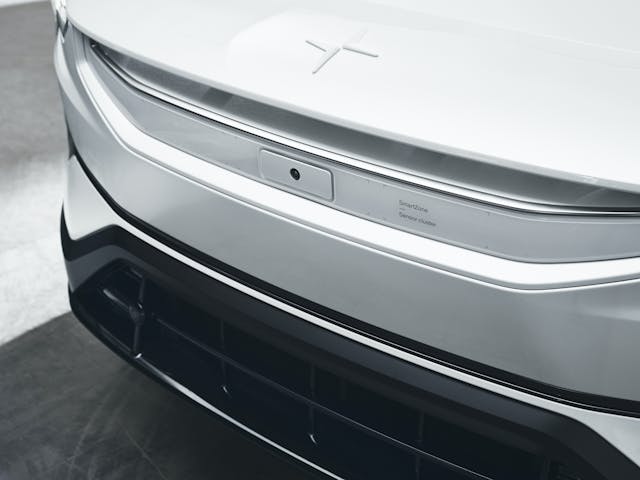
The Polestar 3 is a reasonably large three-row sport-ute: Length is 193 inches, height is 64 inches, width is 83.5 inches with mirrors. Standard tires are 21 inch Michelins; optional are 22-inch Pirellis. Front brakes are four-piston Brembos.
Production for initial launch markets is planned to begin at Volvo Cars’ facility in Chengdu, China, with an incremental ramp-up phase beginning in mid-2023. First deliveries are expected in the fourth quarter of 2023. Additional manufacturing in the United States at Volvo Cars’ Ridgeville, South Carolina facility is expected to follow towards the middle of 2024.
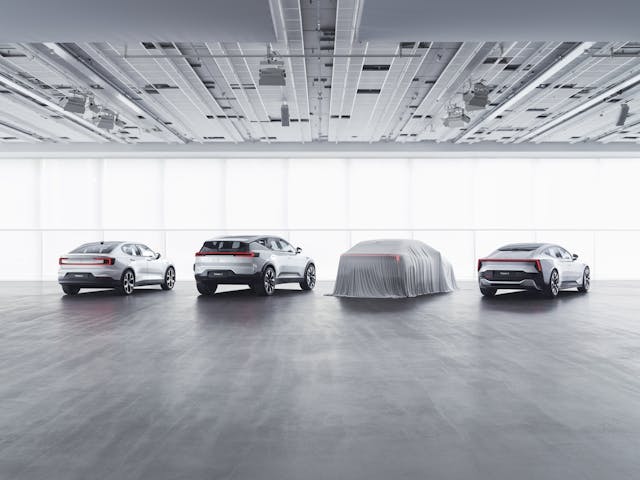
From 2022 on, Polestar plans to launch one new electric vehicle per year, starting with the 3 SUV, which the company is calling its first electric performance SUV. The 4 is expected to follow in 2023 as a smaller electric performance SUV coupe.
In 2024, the Polestar 5 electric performance 4-door GT is planned to be launched as the production evolution of the Polestar Precept, the manifesto concept car Polestar released in 2020 that showcases the brand’s future vision in terms of design, technology, and sustainability.
In March 2022, Polestar revealed its second concept car, an electric performance roadster which builds on the design laid out by Precept and showcases the brand’s vision for future sports cars. Polestar confirmed in August 2022 that a version of the concept will be produced as the Polestar 6 electric performance roadster, with launch expected in 2026.





